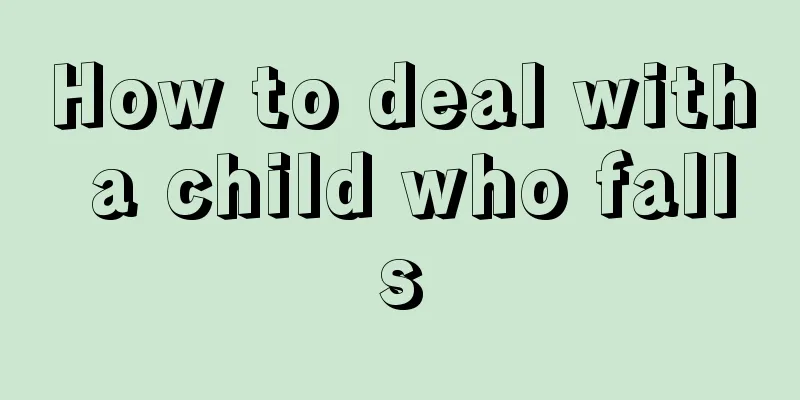How to deal with a child who falls

|
Children's skin is very delicate, and their knees can easily be injured if they fall. Because there are so many joints and bones in the knee area, and they are closely connected to each other, if the knee is injured, it will affect the entire knee. After a child falls, you should first observe whether the child's skin is red or swollen, and then disinfect it. So, what should we do after a child falls? 1. Observe whether the child is injured, whether his hands or feet are sprained, whether his head is bumped, etc., then pick up the child. Be gentle and comfort the child slightly, and avoid shaking the child; 2. If the child has obvious traumatic bleeding, fractures or sprains, rapid eye tremors, projectile vomiting, lethargy or even convulsions, he or she should seek medical attention immediately without delay; 3. If the child can already walk and does not appear to be injured or in any abnormal condition, parents should encourage the child to stand up on his own. 4. If the swelling is accompanied by broken skin, disinfect with iodine first, clean the foreign matter on the wound, apply a band-aid, and apply cold compress after the bleeding stops; 5. If it is just swelling, you can take ice cubes and wrap them in a towel for cold compress within 24 hours after the fall. Ice cubes can immediately shrink blood vessels and prevent the swelling from spreading. 6. You can apply hot compresses 24 hours after falling, which can speed up blood circulation and help to promote blood circulation and remove blood stasis. 7. If you have a sprain, you can massage it a little after 1-2 days to help the swelling subside. Do not do strenuous exercise at will after a sprain to avoid aggravating the condition. 8. If the sprain is accompanied by joint dislocation or fracture, you should seek medical attention promptly. You should rest for a period of time after being discharged from the hospital and consume more foods high in calcium to help you recover faster. 9. If the wound is shallow and not large, and the skin is only slightly abraded, you only need to use a cotton swab dipped in iodine, 75% alcohol, etc. to wipe and disinfect the affected area. If you are worried that the child will scratch or accidentally scratch the wound again, you can put on a Band-Aid. But you can’t use Band-Aids casually. Click <The nurse will teach you the correct way to use Band-Aids! > View details; The wound should be disinfected every other day to avoid contact with water; 10. If the wound is large or deep, clean the wound first. If there is a lot of bleeding, hold it with a towel and seek medical attention immediately. If necessary, get a tetanus vaccine. |
<<: Early symptoms of childhood lymphoma
>>: Why does my 3-month-old baby sweat on his palms?
Recommend
Thirteen-month-old baby food recipes
After the baby has been fed with breast milk for ...
Reasons why babies shake their heads before falling asleep
Because of the incomplete development of their se...
Treatment for back pain in children
Children's back pain often makes us parents a...
Is it okay for a child to take a bath when he has a fever?
When children have a fever, some parents panic. T...
Why does a child have a runny green nose?
Everyone will inevitably have a runny nose. The m...
What should I do if my baby eats preservatives?
Preservatives are a common substance used to pres...
Recurrent episodes of hand, foot and mouth disease
Hand, foot and mouth disease usually occurs in au...
Children have fever and joint pain
Children always have joint pain when they have a ...
What to do if your seven-month-old baby is anemic
Nowadays, many babies always have many problems w...
How to treat children's excessive liver fire
In life, many children suffer from constipation, ...
Reasons for newborn spitting up
We all know that newborns are prone to diseases d...
What are the symptoms of intestinal necrosis in babies?
Intestinal necrosis is a very serious disease, bu...
The reason why a 3-year-old baby breathes heavily when sleeping
It is necessary to be very careful in caring for ...
What is the reason for the peeling of the feet of a two-year-old baby?
Babies are more likely to get sick than normal pe...
What are the treatments for infantile cerebral palsy?
Cerebral palsy in infants is a relatively serious...









